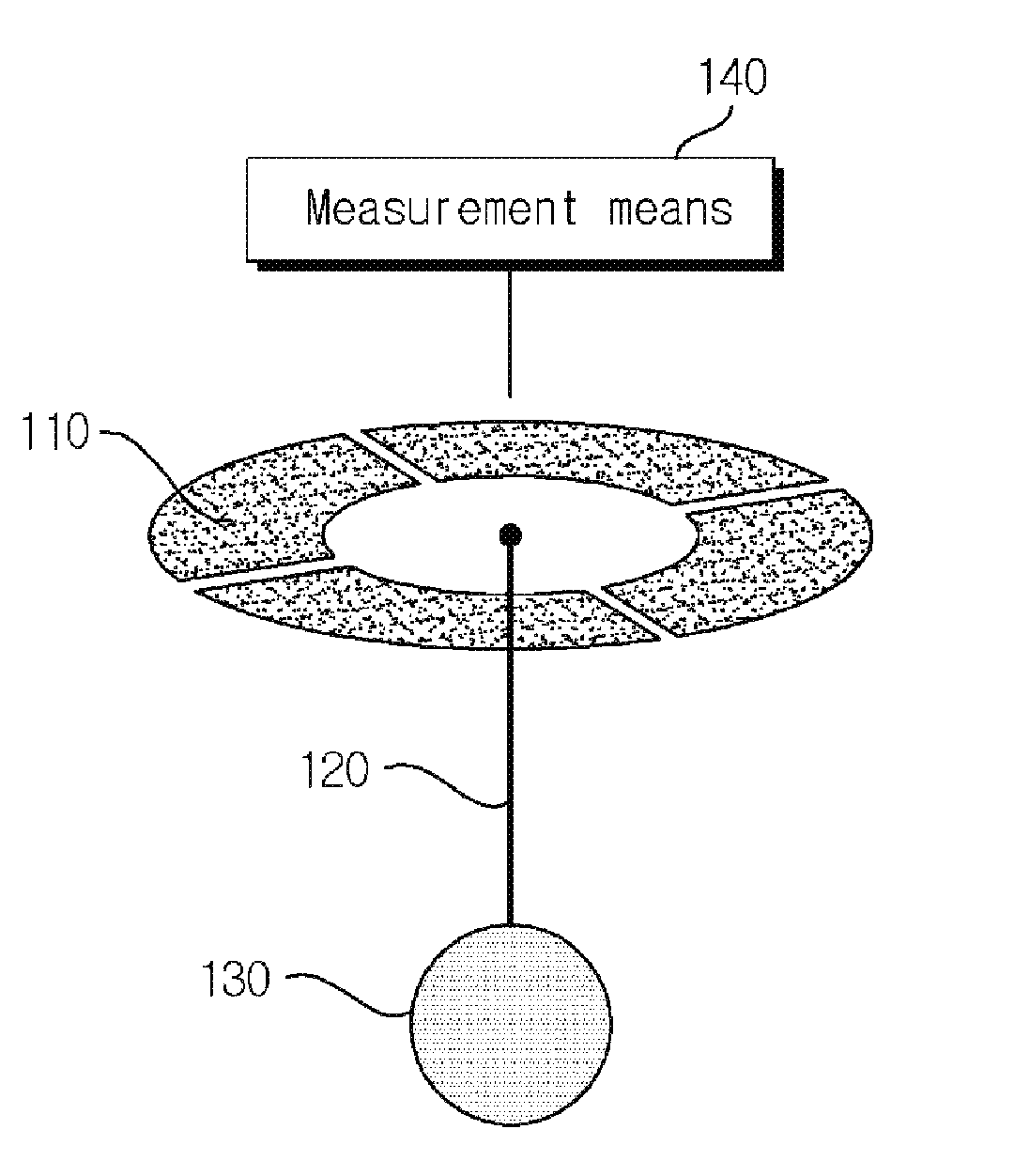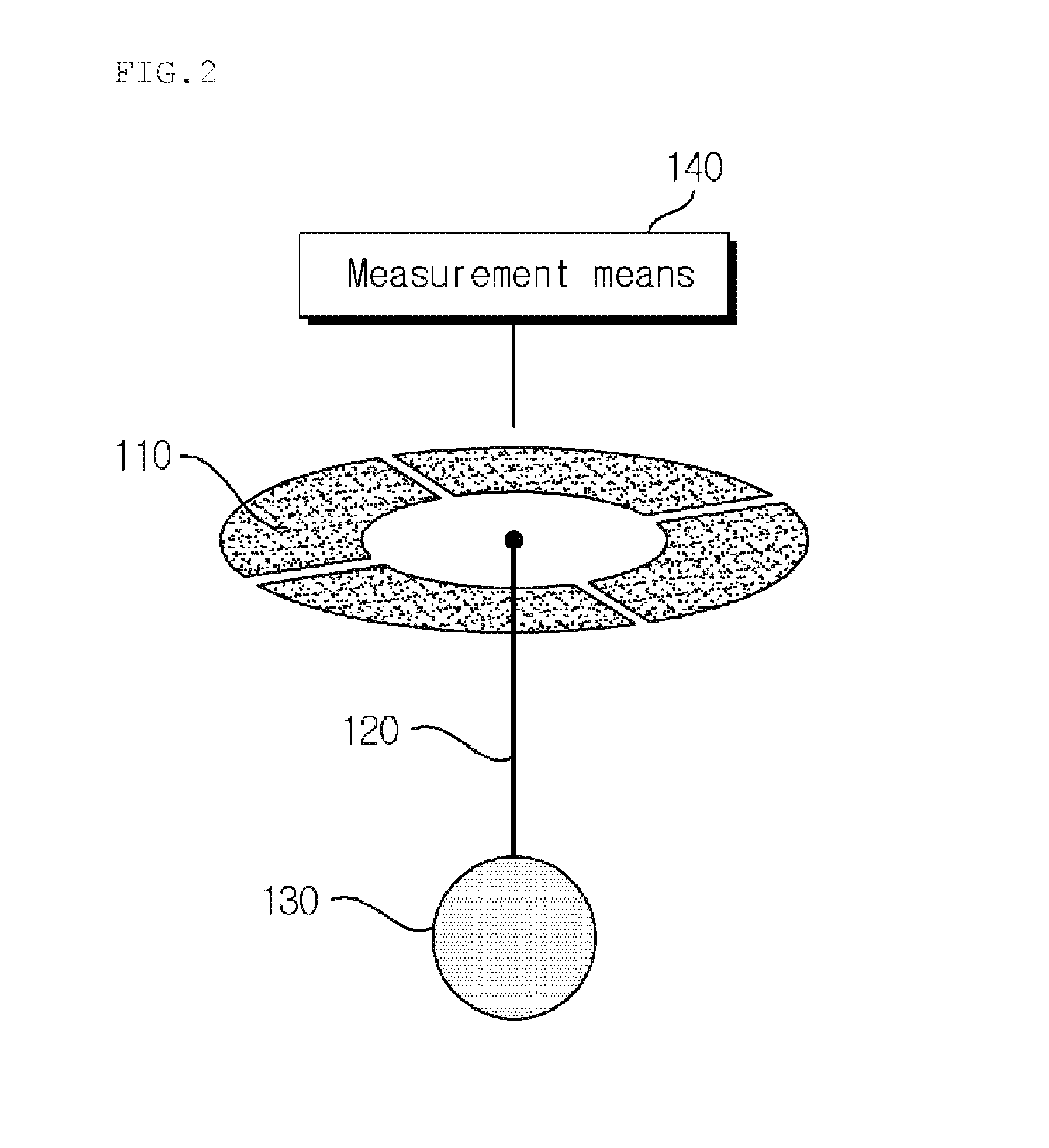Sensor for measuring tilt angle based on electronic textile and method thereof
a technology of tilt sensor and electronic textile, which is applied in the direction of measuring leads/probes, instruments, weaving, etc., can solve the problems of malfunction, limited application field of tilt sensor constructed as above, and the inability to know the tilt angl
- Summary
- Abstract
- Description
- Claims
- Application Information
AI Technical Summary
Benefits of technology
Problems solved by technology
Method used
Image
Examples
Embodiment Construction
[0030]Hereinafter, a sensor for measuring a tilt angle based on electronic textile according to exemplary embodiments of the present invention and a method thereof will be described in detail with reference to the accompanying FIGS. 2 through 6. Description will be made in detail based on a portion required to understand an operation and effect according to the present invention.
[0031]In particular, the present invention proposes a new tilt sensor based on electronic textile that connects a metal bead to dangle from a center between a plurality of conductive textile electrodes disposed at uniform intervals using a textile conductive wire and in this instance, connects the textile conductive wire using a twisted pair cable connecting scheme.
[0032]FIG. 2 is a diagram illustrating a tilt sensor based on electronic textile according to an exemplary embodiment of the present invention.
[0033]As illustrated in FIG. 2, the tilt sensor based on the electronic textile according to the present...
PUM
| Property | Measurement | Unit |
|---|---|---|
| distances | aaaaa | aaaaa |
| length | aaaaa | aaaaa |
| diameter | aaaaa | aaaaa |
Abstract
Description
Claims
Application Information
 Login to View More
Login to View More - R&D
- Intellectual Property
- Life Sciences
- Materials
- Tech Scout
- Unparalleled Data Quality
- Higher Quality Content
- 60% Fewer Hallucinations
Browse by: Latest US Patents, China's latest patents, Technical Efficacy Thesaurus, Application Domain, Technology Topic, Popular Technical Reports.
© 2025 PatSnap. All rights reserved.Legal|Privacy policy|Modern Slavery Act Transparency Statement|Sitemap|About US| Contact US: help@patsnap.com



